When reading sheet music, the very first challenge you’ll encounter is “how to read notes.”
Especially for piano beginners, questions often arise such as “How long does each note last?” “How do you count rests?”
In this article, we will explain the different types of notes and rests in a way that even beginners can easily understand. Once you can smoothly read sheet music, playing the piano will become even more enjoyable!
Basic Knowledge of Notes
Basic Structure of Sheet Music
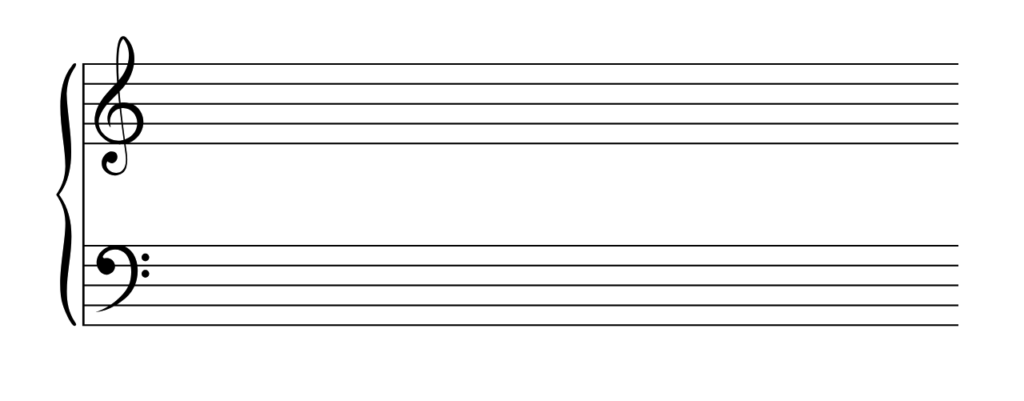
Before learning notes, let’s quickly go over the basic structure of sheet music.
Piano sheet music usually uses a two-staff system (five lines each). The upper staff typically uses the treble clef for the right hand, while the lower staff uses the bass clef for the left hand.

- Barlines divide the music into sections, each called a “measure.”
- The time signature determines how many beats are in each measure. For example, in 4/4 time there are 4 beats per measure, while in 3/4 time there are 3 beats.
The Relationship Between Beats and Notes
と音符の関係-1024x353.png)
Notes indicate the duration of sound based on the beat. Each note is defined relative to the length of one beat.
- If a quarter note equals 1 beat, then a half note lasts twice as long (2 beats), and an eighth note is half as long (0.5 beats).
- They can be further divided into sixteenth notes, thirty-second notes, and so on.
Common Types of Notes and How to Read Them
Here are the main types of notes that piano beginners should learn first.
Whole Note

- Shape: An open circle (no stem).
- Length: 4 beats (in 4/4 time, it lasts for an entire measure).
- Feature: Often used to represent long, sustained sounds.
Half Note
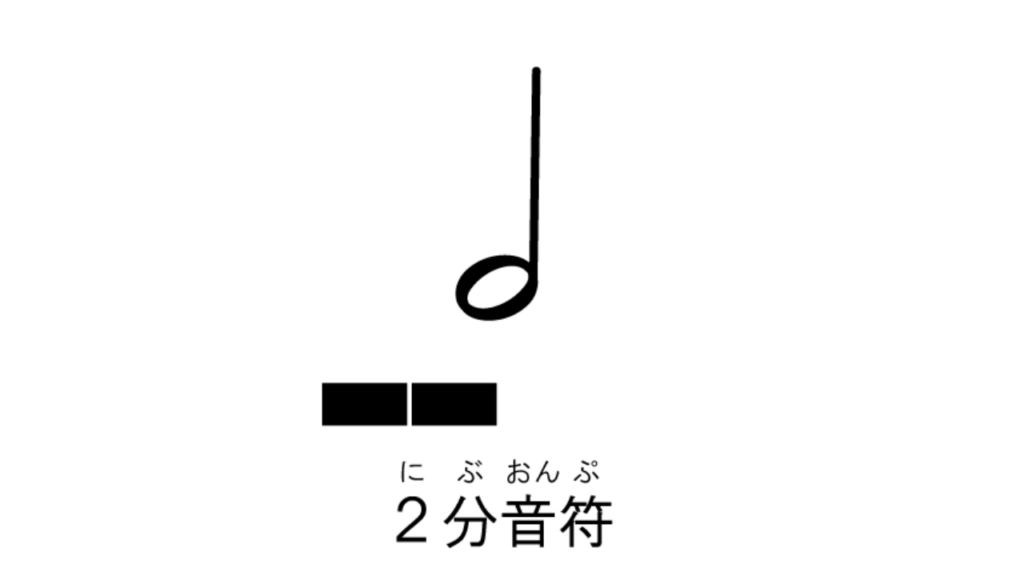
- Shape: An open circle with a stem.
- Length: 2 beats.
- Feature: Frequently appears to sustain sounds for half of a measure in 4/4 time.
Quarter Note
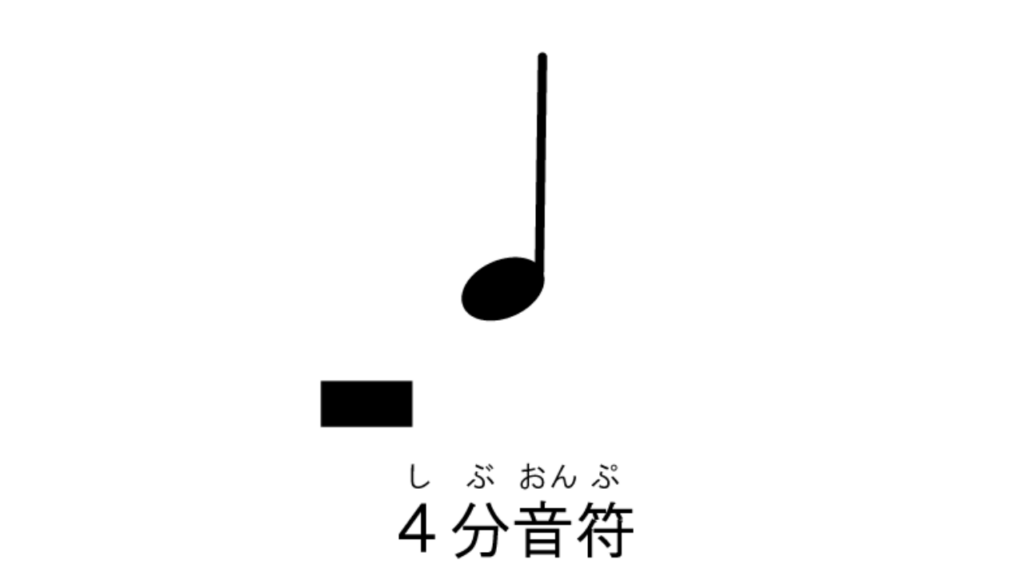
- Shape: A filled-in circle with a stem.
- Length: 1 beat.
- Feature: The most common note, used to mark the steady pulse of the beat.
When learning to read notes, it is easiest to understand everything with the quarter note as your base unit.
Eighth Note
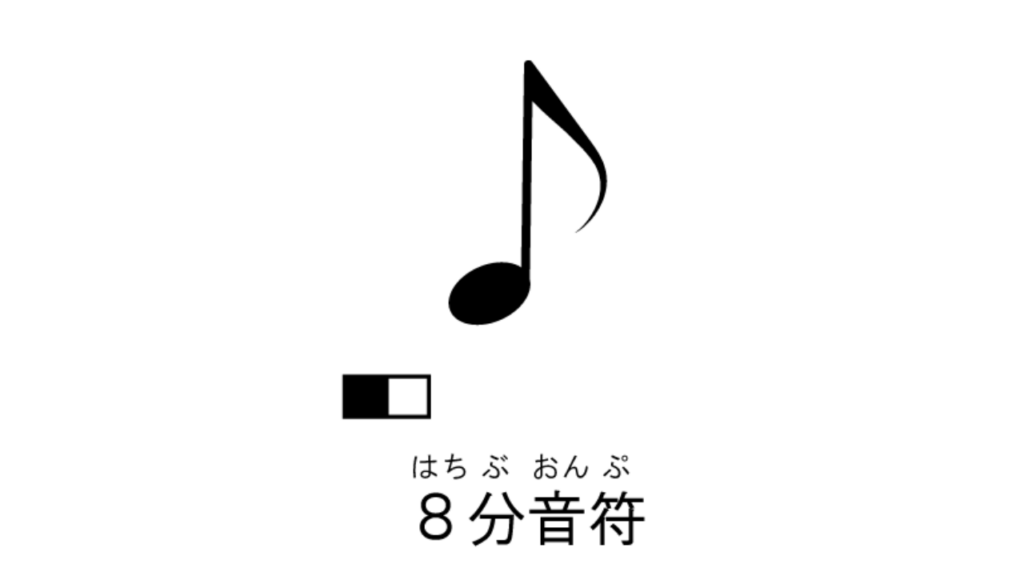
- Shape: A filled-in circle with a stem and one flag.
- Length: 0.5 beats.
- Feature: Often used to indicate faster rhythms.
When two or more eighth notes are grouped together, their flags are usually joined by a horizontal beam.
Sixteenth Note
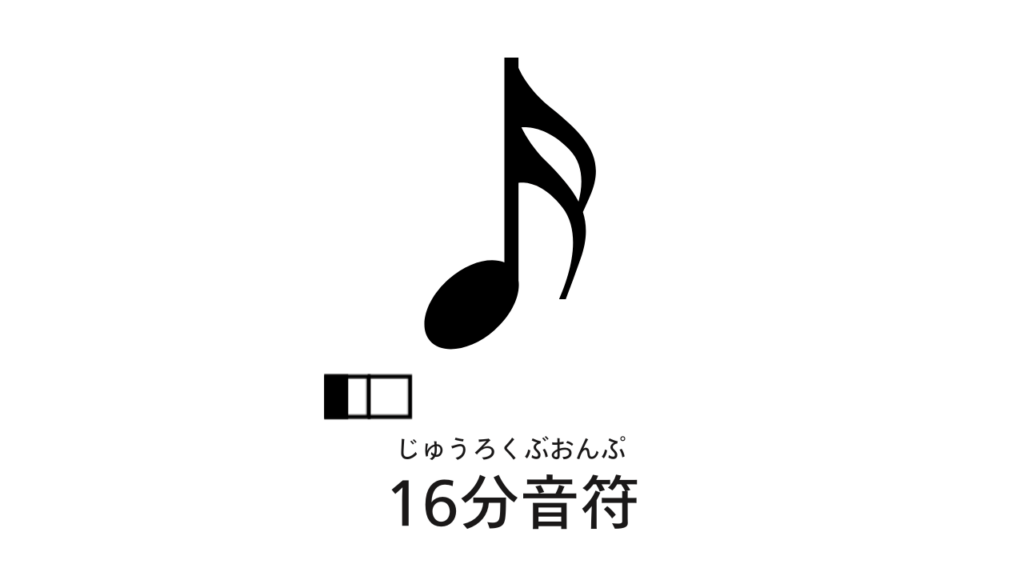
- Shape: Like an eighth note but with two flags.
- Length: 0.25 beats.
- Feature: Divides one beat into four. Appears in passages with finer rhythmic detail.
Types of Rests and How to Read Them
In addition to notes, there are symbols for “silence”, which are called rests.
Even for piano beginners, it’s important to understand rests correctly and respect their duration in order to keep accurate rhythm.
Whole Rest
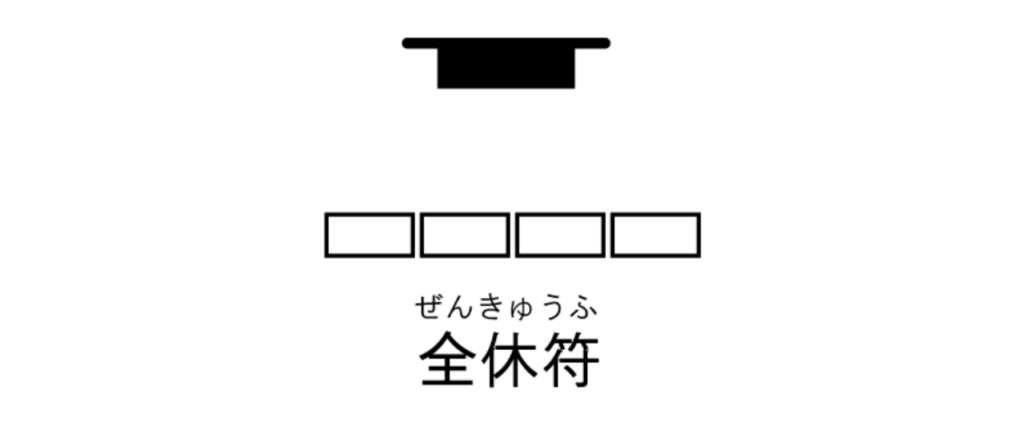
- Shape: A solid rectangle hanging below a staff line.
- Length: 4 beats of silence (same as a whole note).
- Usage: Indicates an entire measure of rest.
Half Rest

- Shape: A solid rectangle sitting on top of a staff line.
- Length: 2 beats of silence.
- Tip: Looks similar to a whole rest, but placement (above vs. below the line) distinguishes them.
Quarter Rest
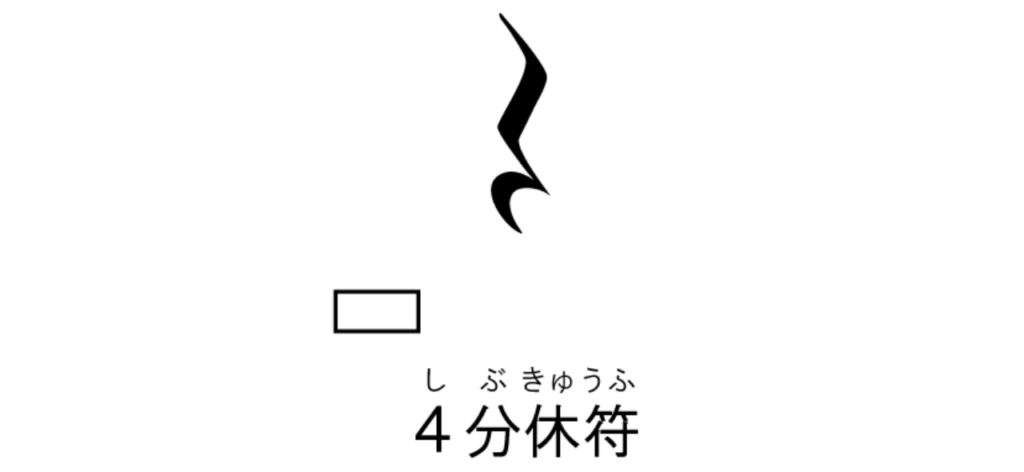
- Shape: A distinctive zig-zag symbol.
- Length: 1 beat of silence.
- Point: Together with the quarter note, it creates a clear contrast between “1 beat of sound” and “1 beat of rest.”
Eighth Rest
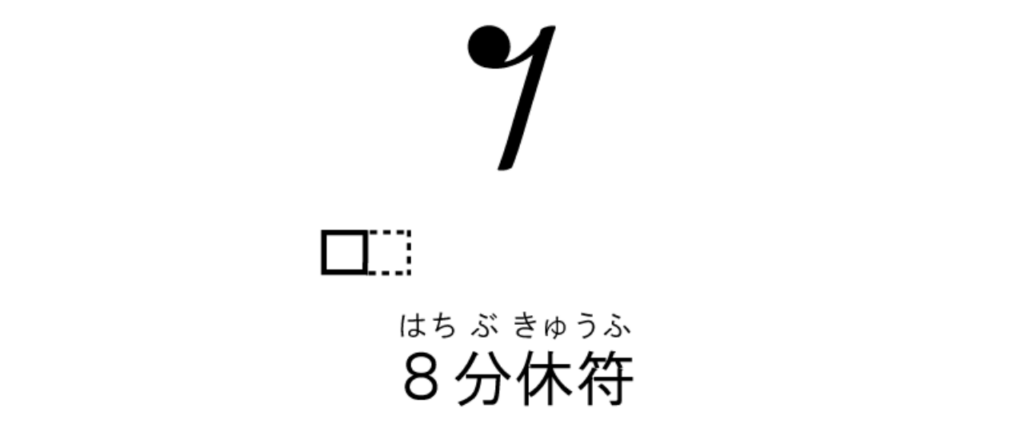
- Shape: A small symbol resembling one flag.
- Length: 0.5 beats of silence.
- Feature: Appears frequently in faster pieces, highlighting tempo and rhythm.
Sixteenth Rest
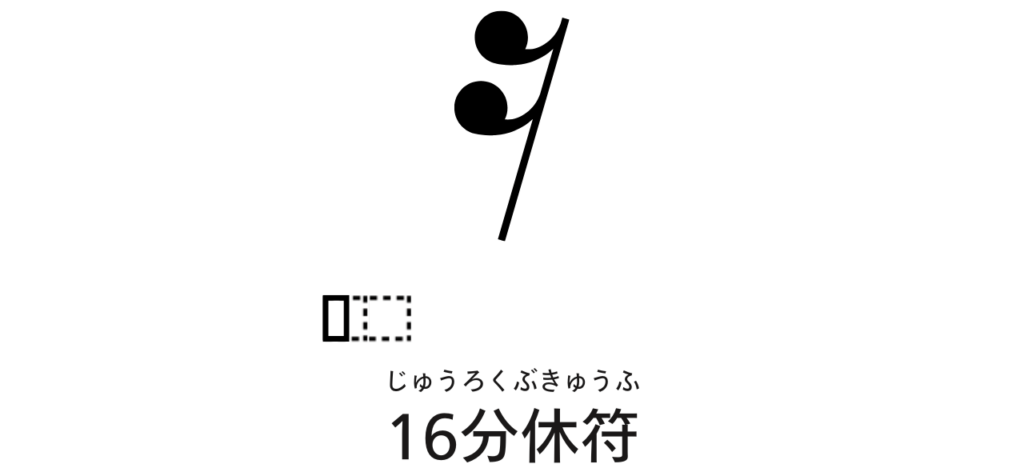
- Shape: A small symbol resembling two flags.
- Length: 0.25 beats of silence.
- Feature: Common in fast passages, emphasizing tempo and detailed rhythm.
Dotted Notes and Dotted Rests (×1.5)
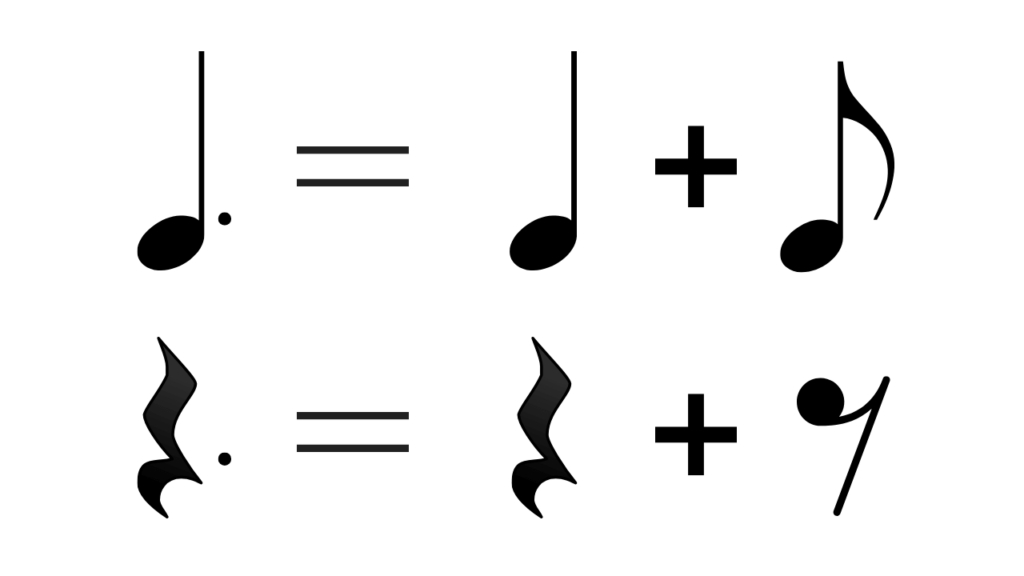
A dotted note means the original note length plus half of its value.
For example, a half note (2 beats) with a dot becomes 2 beats + 1 beat (half its value) = 3 beats in total.
Example: Dotted Half Note
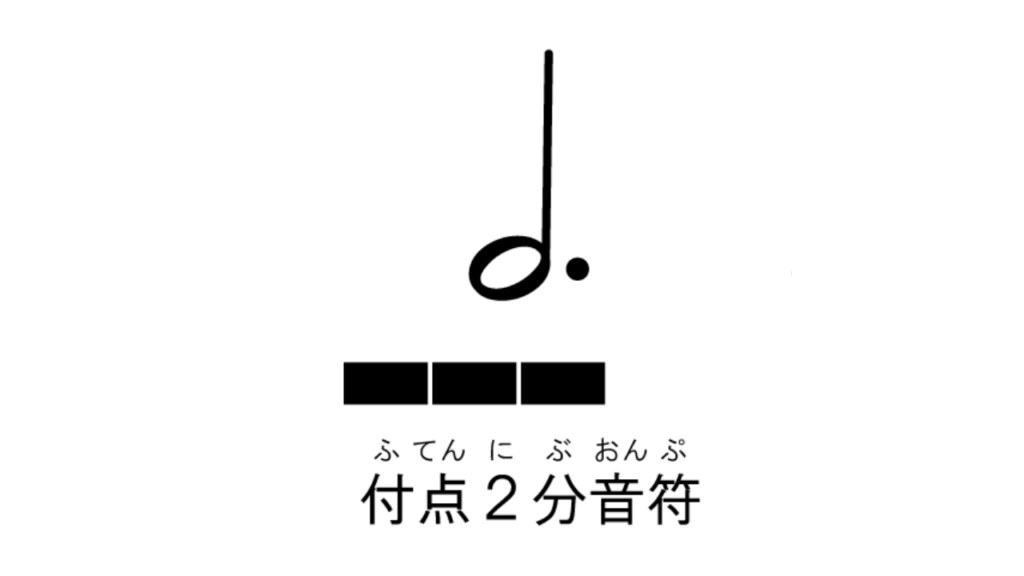
- Half Note: 2 beats
- Dotted Half Note: 2 beats + 1 beat = 3 beats
Dotted Half Rest

Just like notes, rests can also have dots. A dotted half rest equals 3 beats of silence.
- Half Rest: 2 beats of silence
- Dotted Half Rest: 2 beats + 1 beat = 3 beats
Tips for Piano Beginners to Read Sheet Music
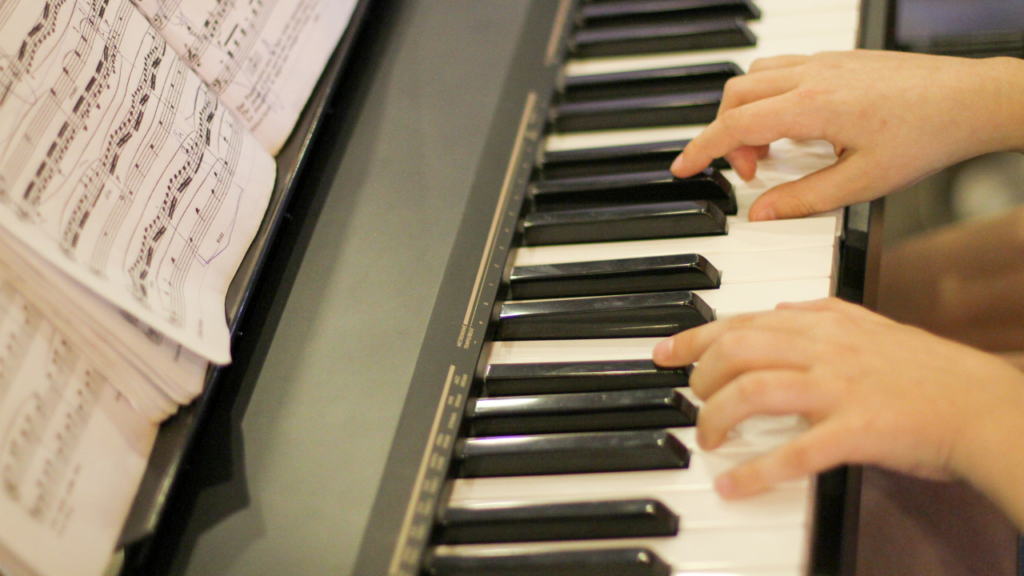
Count the Beats According to the Time Signature
The duration of notes and rests is always tied to the time signature. For example, in 4/4 time there are 4 beats per measure, while in 3/4 there are 3 beats.
Use a metronome and count aloud: “1, 2, 3, 4…” to help internalize the rhythm.
Don’t Try to Memorize Everything at Once
There are many types of notes and rests, including eighth, sixteenth, and even thirty-second notes.
Start with quarter notes, quarter rests, and half notes. Then gradually expand to eighth and sixteenth notes.
Practice by Actually Playing
Reading notes is not just theory. The fastest way is to practice directly on the piano.
Play quarter notes for 1 beat, divide eighth notes into half beats, lift your hands for rests—learn rhythm with your body.
Use Sheet Music of Songs You Love
Instead of only textbooks, check the sheet music of songs you like. Identify quarter notes, eighth notes, etc.
Because it’s a piece you love, motivation increases and your reading skills will improve faster.
Frequently Asked Questions (Q&A)
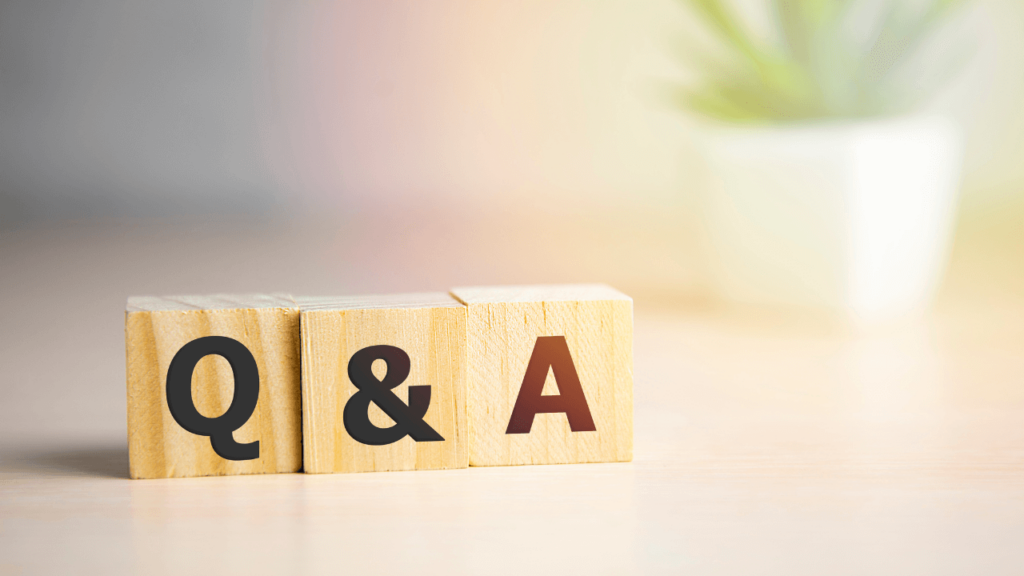
Q1. I’m not confident about note lengths…
A. Use a metronome to check the beats while you play.
Start slowly to ensure accuracy, then gradually increase the tempo.
Q2. Where should my hands be during rests?
A. During rests, lift your fingers off the keys but keep your wrists and arms relaxed so you’re ready for the next note.
Beginners sometimes “rest too long” and miss the next note. Count carefully to stay in rhythm.
Q3. Eighth and sixteenth notes confuse me…
A. Smaller note values make rhythm more complex.
First, master quarter notes. Then practice dividing each beat into two for eighth notes. Once that’s easy, move on to dividing into four for sixteenth notes.
Summary
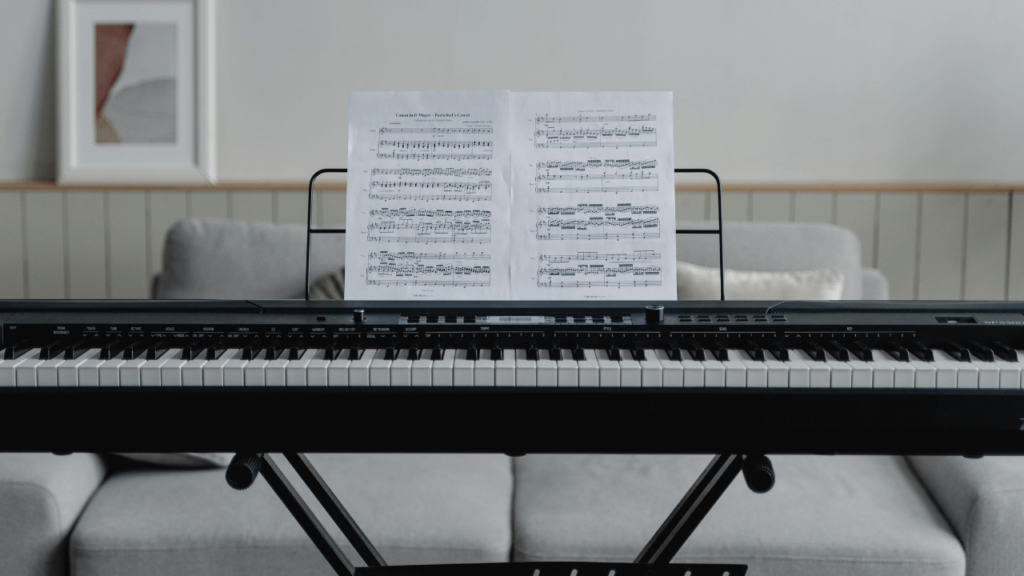
To master reading notes, it is essential to understand the types and lengths of notes and rests accurately and repeatedly practice applying them to rhythm.
- Basic notes and rests (whole note, half note, quarter note, eighth note, whole rest, half rest, quarter rest, eighth rest)
- Understanding note length according to time signature and tempo
- Using a metronome and actually playing the piano to experience it physically
Once you learn these, reading sheet music will feel much less intimidating, even for beginners.
With practice, you’ll eventually be able to “hear the rhythm in your head” just by looking at the score.
Use this guide to improve your note reading skills and aim to become a pianist who can read sheet music fluently.

